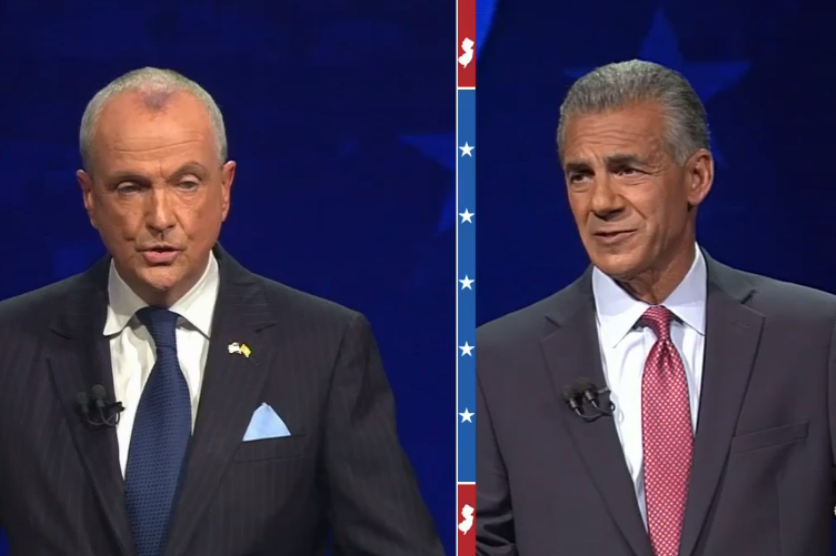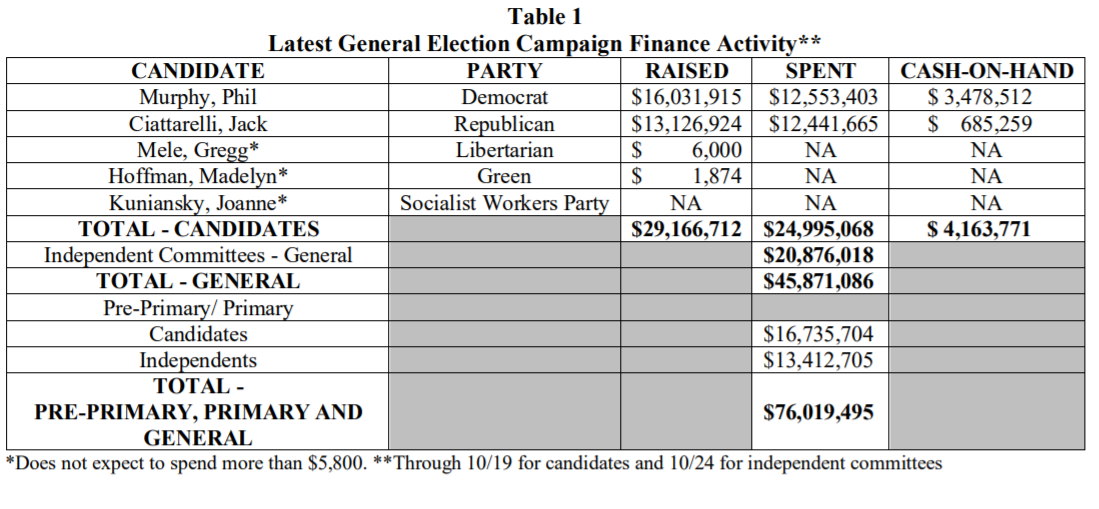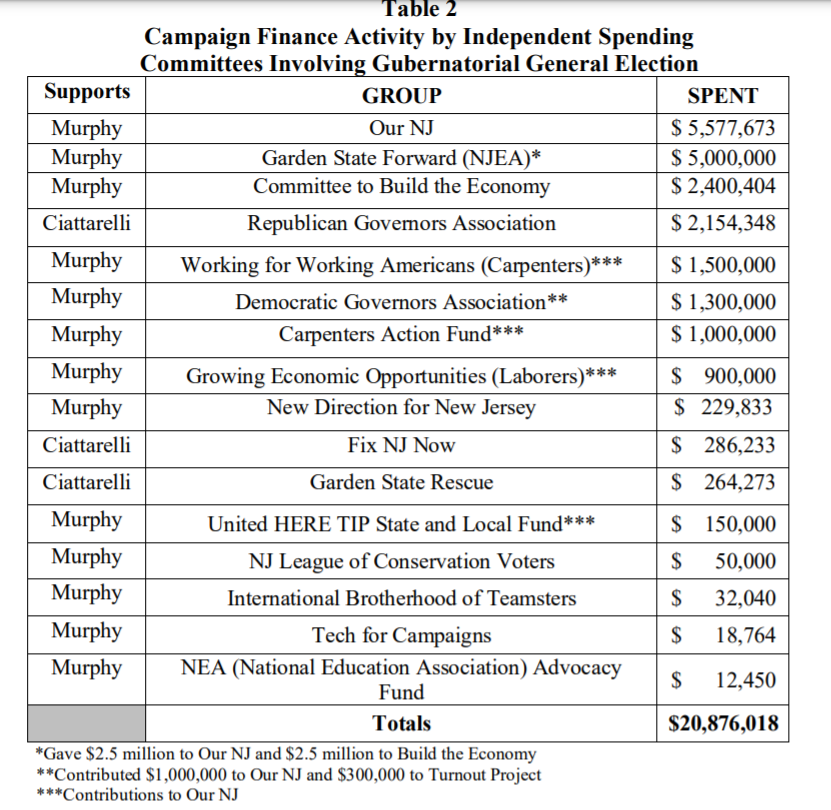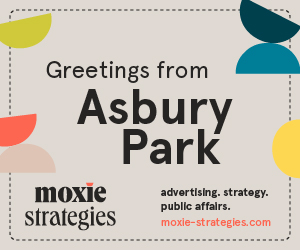ELEC: Gubernatorial Campaign Spending Soars as November 2 Election Nears

Spending in the 2021 gubernatorial election has reached nearly $46 million, a jump of 65 percent from
the last snapshot on October 6, according to the latest filings with the New Jersey Election Law Enforcement Commission (ELEC).
Jeff Brindle, ELEC’s Executive Director, said the total combines the most recent spending by the two
major candidates with a late influx from several independent committees aligned with them.
“With just two governor seats in play this year here and in Virginia, and the seeming tightening of polls
in New Jersey, both parties seem to be viewing this as a high stake’s race,’’ said Brindle. “In the past week alone, independent groups spent more than $7.2 million.”
Democratic Governor Phil Murphy, who is running for reelection, so far has raised $16 million and
spent $12.5 million. With the November 2 election just eight days away, he has $3.5 million in cash reserves.
Republican challenger Jack Ciattarelli has raised $13.1 million and spent $12.4 million. He has
$685,259 cash-on-hand.

Brindle said the $45.9 million in spending is nearly twice the $23.8 million in spending reported at this
point four years ago.
One reason is because Ciattarelli has had more success than other recent challengers raising money.
New Jersey gubernatorial candidates are eligible for two public dollars for every one dollar they receive from private sources.
Murphy has received the full $10.5 million available through the public financing program. Ciattarelli
has received $9.1 million to date- 87 percent of the full sum.
“Ciattarelli has received more than three times as much public funds as the Republican candidate in
2017 and nearly five times more than the Democratic contender in 2013,’’ Brindle said. “He has raised more public funds than even Chris Christie in 2009, who defeated incumbent Governor Jon Corzine.”
More public funds are available for the candidates this year than in 2017- a maximum of $10.5 million
in 2021 versus $9.3 million in 2017. Public financing is adjusted upward every four years to account for
inflation.

The election price tag also is up this year because independent spending is about twice what it was at
this point four years ago- $20.9 million versus $10.6 million.
“Independent spending committees, which barely existed 15 years ago, now play a major role in state
elections. A significant share of spending in each statewide election now comes from these groups,’’ he said.
At least so far, combined spending by the Democratic and Republican Governors Associations is below
the total in 2017, when Democratic Governor Phil Murphy first won election.
The two associations combined have spent $3.9 million on independent spending and contributions to
candidates. In 2017, they spent a total of $5.5 million. Both groups could be spending more in coming days. Murphy serves as DGA’s finance chairman.

Along with the spending by the two governors’ associations, national unions usually send large checks
to Democratic county parties during gubernatorial election years and that trend is occurring again in 2021.
County parties play a key role in get-out-the-vote activities and other election-related efforts.
So far, the United Food and Commercial Workers Union has been the top union donor, sending
$377,500 to county parties while Laborers Political League has given $231,500.
While not Washington, DC-based like these two unions, generous Republican benefactors also have
emerged during a critical election year.
Bob Hugin, former Celgene CEO who spent $36 million in an unsuccessful run for US Senate in 2018,
now serves as chairman of the Republican State Committee.
He and his wife Kathy have already contributed $520,875 to Republican party committees, candidates
and Women for a Stronger New Jersey, an independent group that supports Republican women candidates.
The founder of that independent group, Laura Overdeck, has donated $300,000 to the committee. Along
with her husband John, she has given a total of $427,100 to GOP candidates and committees.
1 Both associations are 527 political organizations. While they cannot make contributions to federal candidates, they can make contributions to state and local candidates along with engaging in independent spending.









Leave a Reply